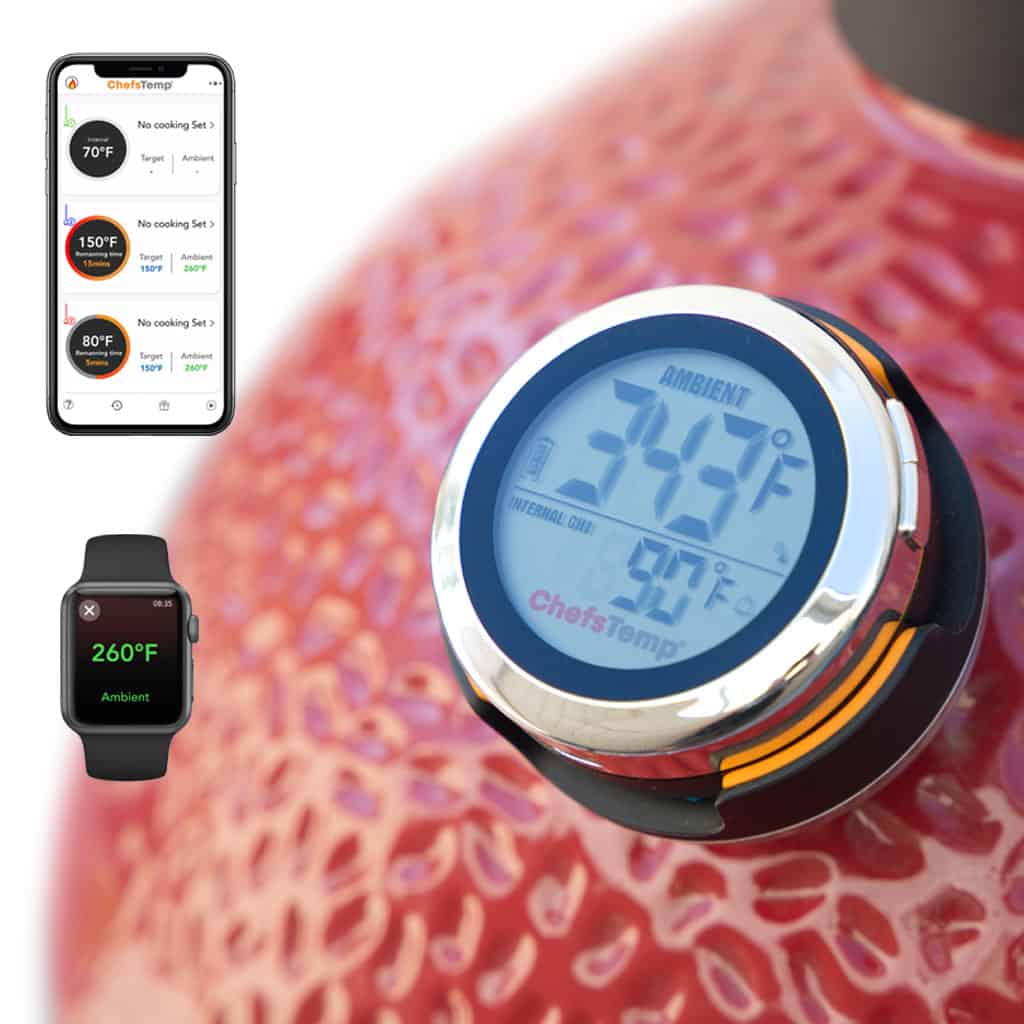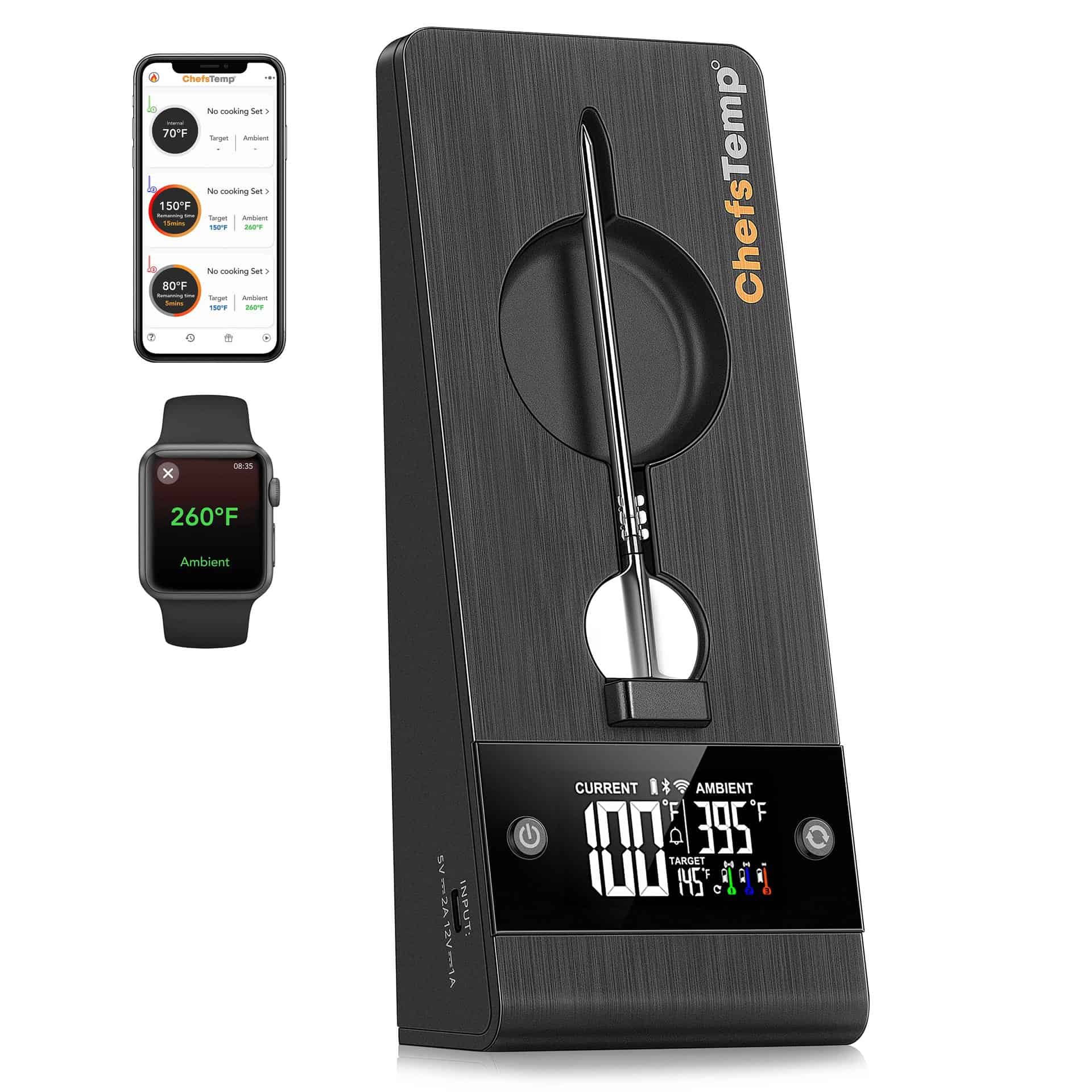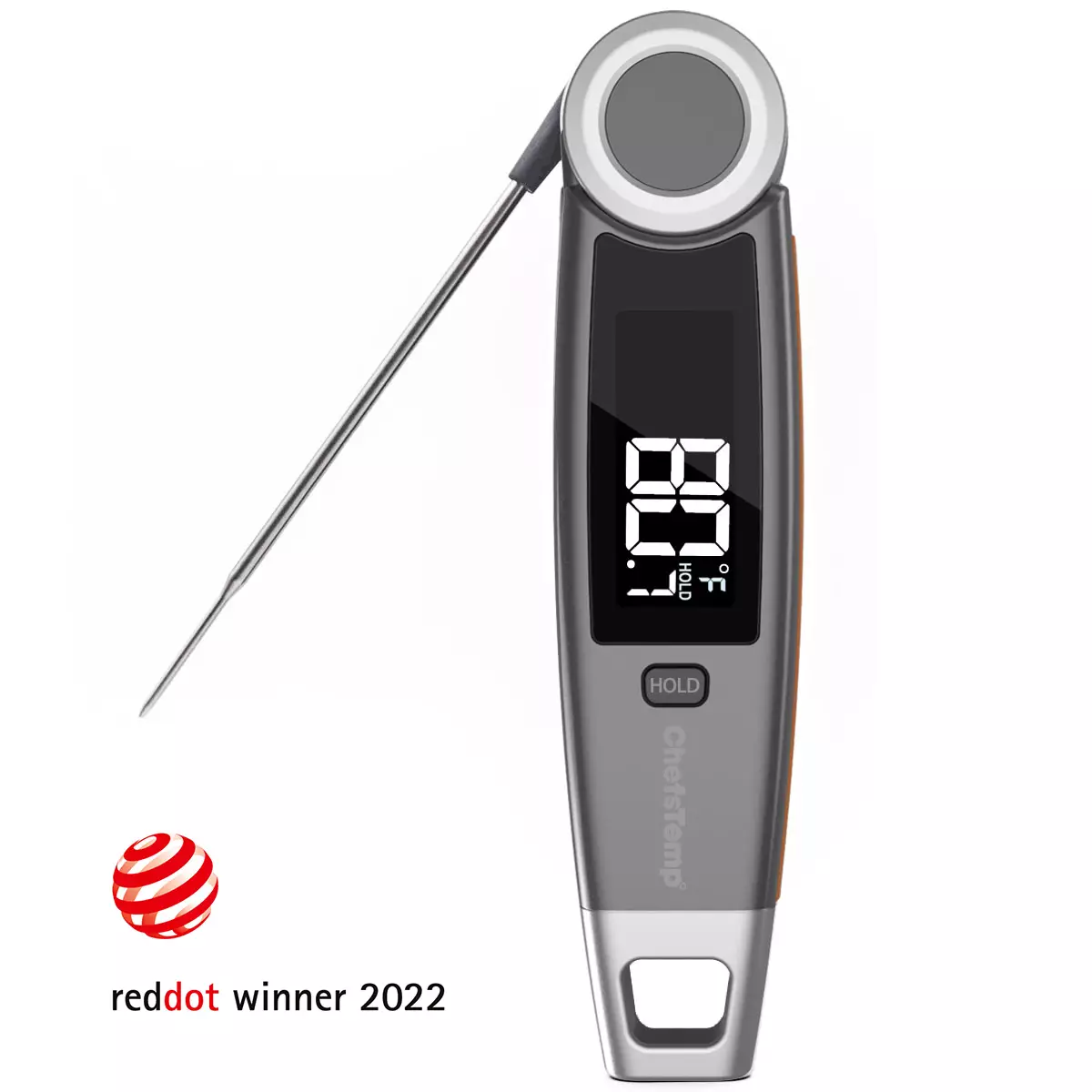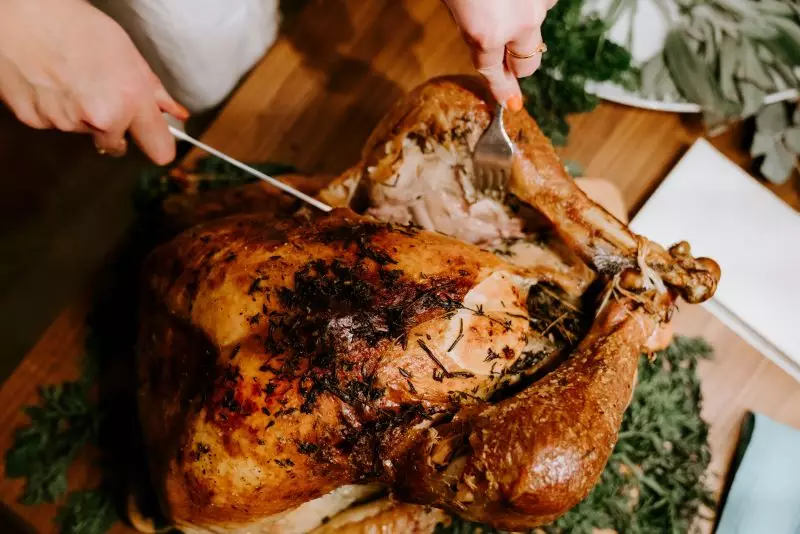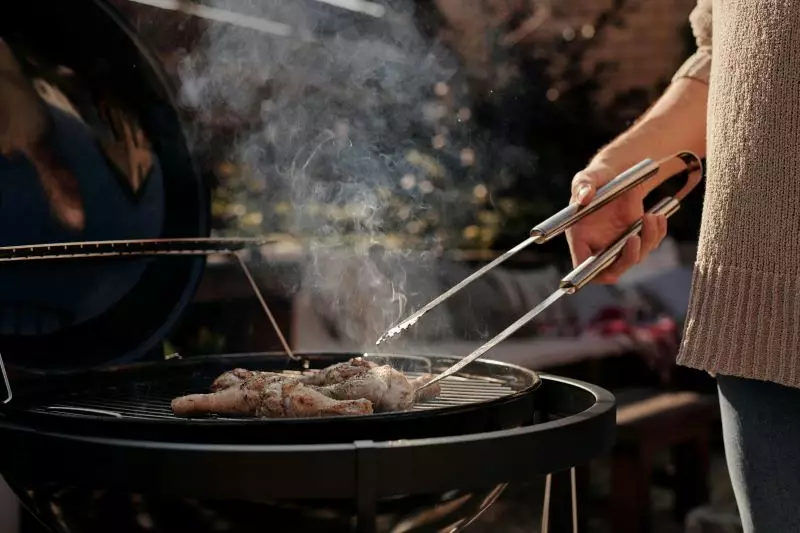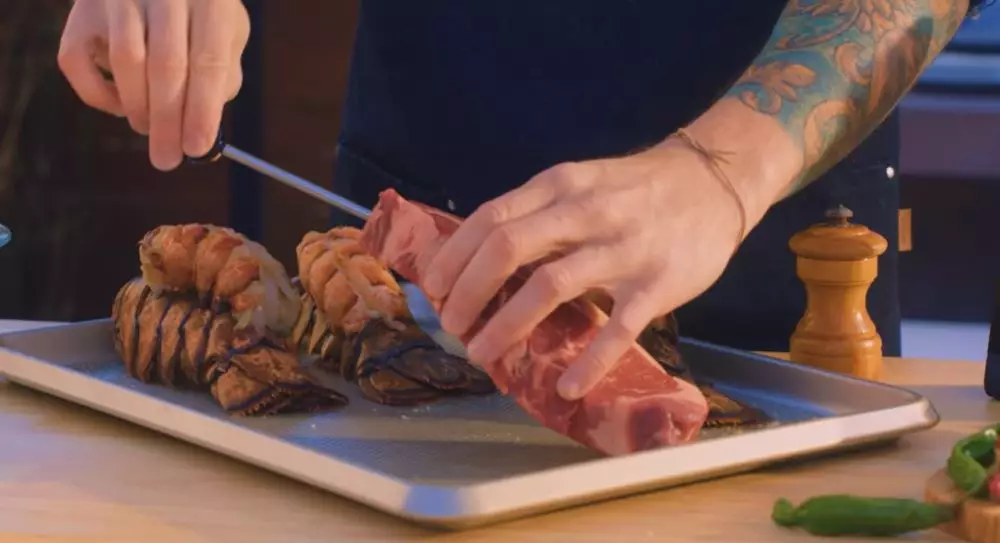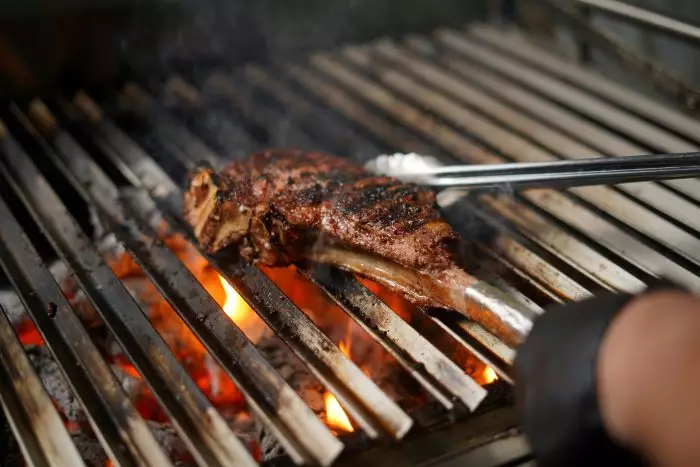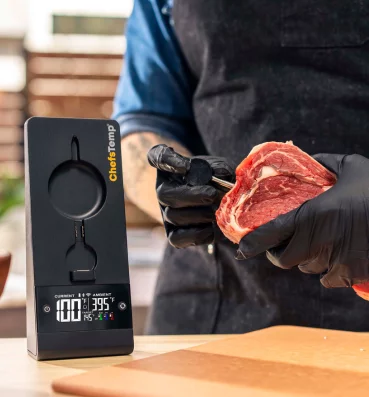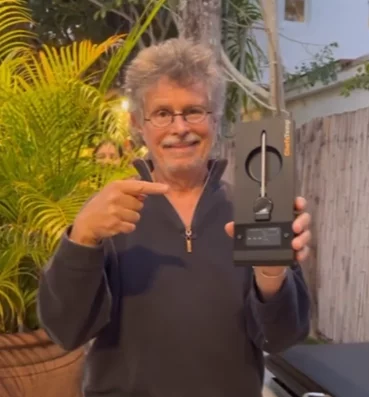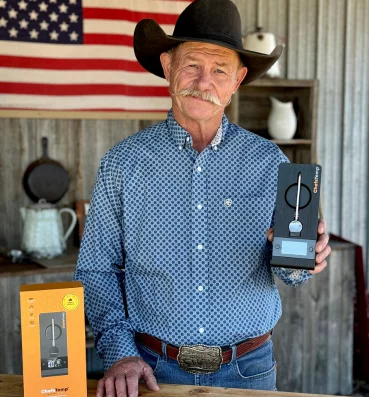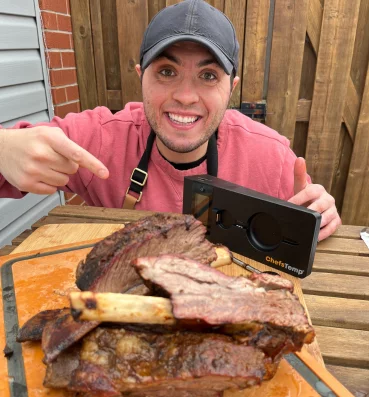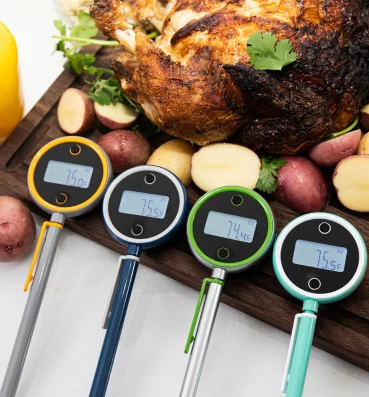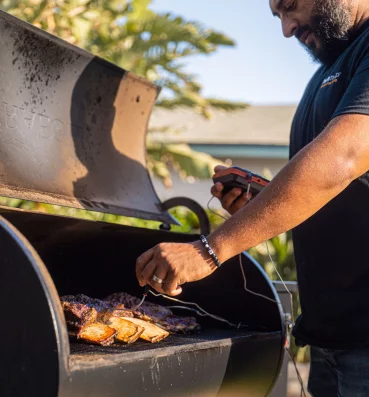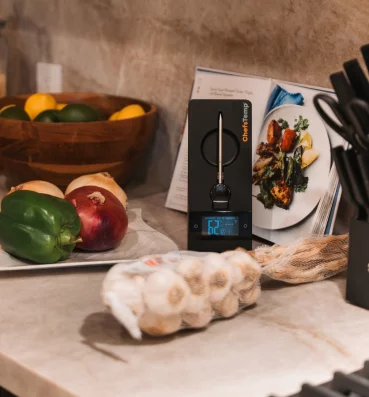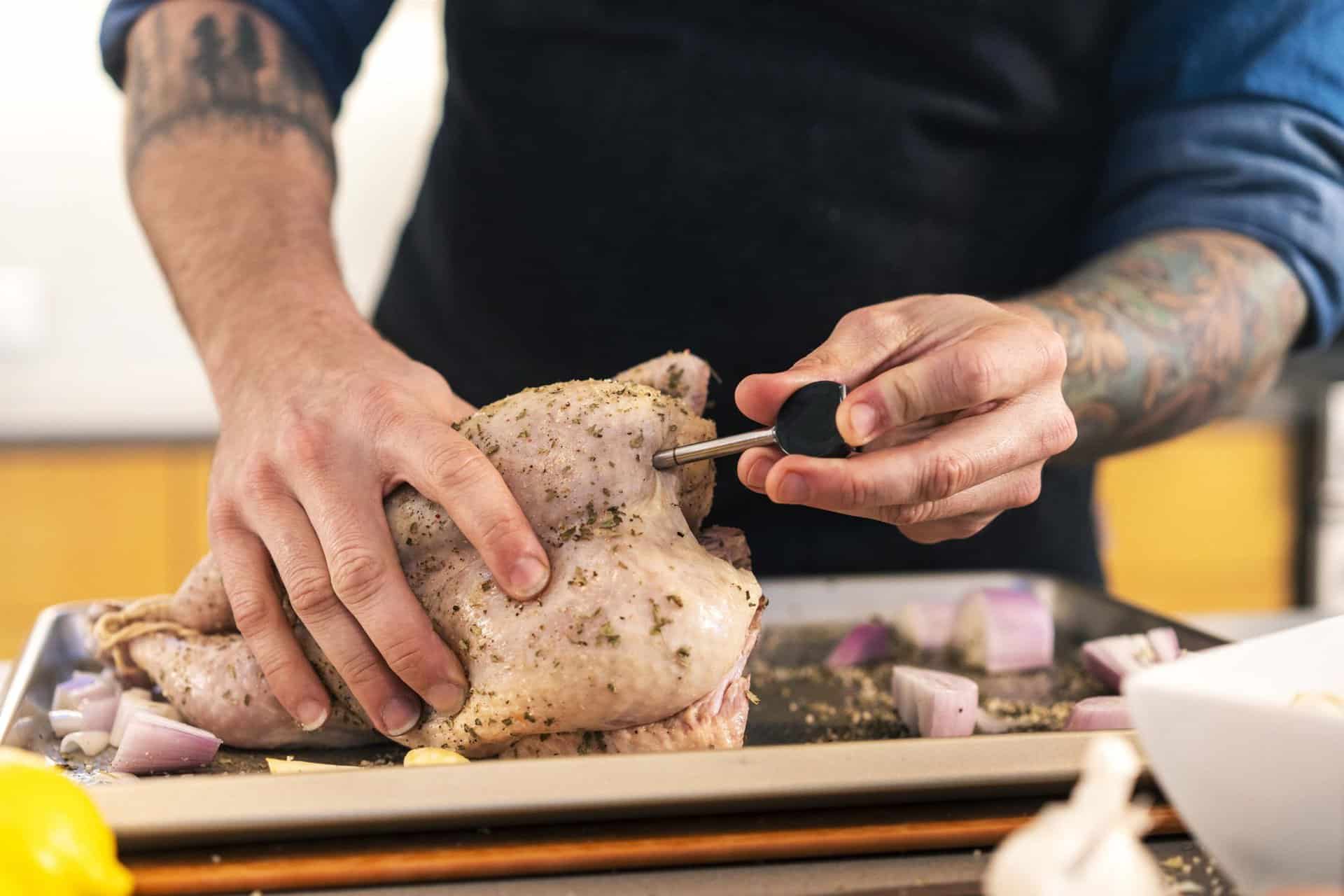
What are Some Good Meat Thermometers for Home Use?
The best wireless meat thermometers have emerged as invaluable devices for home chefs, providing both convenience and precision in monitoring cooking temperatures. Let’s delve into some of the standout wireless meat thermometers available for home use today.
Table of Contents
Smart Wireless Meat Thermometer:
Using Bluetooth or Wi-Fi, this cutting-edge thermometer connects to your smartphone or tablet without any fuss or tangled wires. It provides real-time temperature measurements and notifications via an associated app, letting you keep an eye on your cooking from a distance. Oven and grilling fans love it for its smart design and convenient features.
Wireless Remote Digital Cooking Food Meat Thermometer:
Equipped with dual-probe technology, this thermometer provides accurate temperature readings without the limitations of wired devices. It allows you to multitask while making sure your meat is cooked to perfection thanks to its wireless range that reaches up to hundreds of feet. For extra convenience, simultaneously check the internal temperature of the meat and the cooking appliance.
Bluetooth Thermometer:
This multi-device compatible thermometer uses Bluetooth technology to monitor the temperature of your meat via a dedicated app. With its numerous probes and wireless connectivity, it can be used in a variety of culinary environments and provides accurate temperature monitoring without the inconvenience of cables.
Wireless Grill BBQ Thermometer:
This thermometer has an easy-to-use app design and is reasonably priced without sacrificing quality. It supports various cooking demands and has a respectable wireless range and several probes, making it a great alternative for those looking for a dependable yet affordable option.
Bluetooth Meat Thermometer:
This waterproof thermometer guarantees longevity with its large, clearly accessible display for rapid temperature readings. You can connect even from a distance with its extended Bluetooth range and rechargeable battery, which let you keep an uninterrupted eye on your cooking.
How to Calibrate a Meat Thermometer?
To ensure exact cooking, make sure your meat thermometer is accurate. An important stage is calibration, which includes calibrating the thermometer to guarantee reliable readings. This is a how-to instruction for calibrating your meat thermometer:
Ice-Water Method:
Assemble Your Materials: Get your meat thermometer, a glass, ice cubes, and water.
Prepare Ice Water:
Fill the glass with ice cubes and add cold water until it’s full. To guarantee a consistent temperature, stir the mixture.
Insert Thermometer:
Without letting the probe touch the sides or bottom of the glass, insert the thermometer’s sensing area into the ice water. Hold it steady for several minutes until the reading evens out.
Calibration Check:
The thermometer should read 32°F (0°C) in the ice water. Note the difference between 32°F (0°C) and the displayed temperature if the measurement is incorrect. This variation shows the calibration error of the thermometer.
Adjustment:
Some thermometers have a calibration nut or a reset button that allows for manual adjustments. To fix the mistake, consult the manufacturer’s instructions. The user handbook may contain particular instructions that must be followed in order to recalibrate a digital thermometer.
Recheck Accuracy:
Check to see if the thermometer now registers 32°F (0°C) by repeating the ice-water test after making any modifications. Your thermometer is correctly calibrated if it does. If not, carry out the adjustments again until the calibration is as desired.
Boiling Water Method (for dial thermometers):
Boil Water:
Pour water into a saucepan and heat it until it reaches a rolling boil.
The thermometer probe should be inserted into the boiling water without coming into contact with the pot’s bottom or edges. After a few minutes, hold it still until the reading stabilizes.
Verify Reading:
Water boils at 212°F, or 100°C, at sea level. Check to see if this temperature is recorded by the thermometer. If not, see how 212°F (100°C) differs from the temperature that is shown.
A calibration nut may be located beneath the dial on some analog thermometers. Adjust the nut with pliers so that the dial reads the correct boiling point. For information on recalibration, consult the manufacturer’s instructions for digital thermometers.
Evaluate Accuracy Again:
Make sure the thermometer now registers 212°F (100°C) by repeating the boiling water test. Your thermometer is correctly calibrated if it does. If not, keep making adjustments until the proper calibration is obtained.
Why are Built-in BBQ Grill Thermometers so Unreliable?
In many grilling setups, built-in BBQ grill thermometers are a standard feature. These thermometers are typically included into the grill’s lid or hood. These thermometers are known to be inaccurate and unreliable, even though they are convenient. Their lack of reliability is a result of several factors:
Placement and Positioning:
Built-in thermometers are often mounted high above the cooking area on the grill lid or hood. The temperature of the cooking grate where the food is placed may not be precisely represented by this location. Because heat rises, readings might be misleading because the temperature at the lid may fluctuate greatly from the cooking surface.
Calibration and Quality:
A lot of built-in thermometers are made with parts that are either lower-quality or less accurate. They may be less accurate in their calibration or more prone to variations as a result of exposure to extreme heat, bad weather, and normal wear and tear.
Variability in Grill Design:
Heat distribution and airflow are affected by the shapes, sizes, and materials of grills. Often, built-in thermometers are generic and not made especially for the grill in which they are mounted. The absence of customization may lead to disparities in temperature readings among various grill types.
Exposure to High Heat:
Grilling exposes one to very hot temperatures, and the thermometers that are built in are frequently exposed to this heat. The thermometer’s accuracy may deteriorate with time as a result of this exposure, drifting readings and increasing unreliability.
Absence of Routine Maintenance:
A lot of grill owners fail to remember to calibrate or maintain their built-in thermometers. These thermometers lose accuracy with time if not properly maintained, cleaned, and occasionally calibrated, which increases their unreliability.
Due to these inherent limitations, relying solely on a built-in grill thermometer might compromise the quality of your cooked meats. Using a separate, premium meat thermometer set straight on the cooking surface is advised for accuracy in temperature management and consistent cooking. This method gives precise readings that are specific to the food being cooked, making it easier to determine when it’s done.
Discover Precision Cooking with ChefsTemp Wireless Meat Thermometers!
Looking for top-tier wireless meat thermometers that elevate your culinary precision? Look no further than ChefsTemp! Our range of wireless meat thermometers is crafted to meet the needs of discerning chefs and home cooks alike.
Visit ChefsTemp today and explore our range of the best wireless meat thermometers. Elevate your cooking game, savor perfectly cooked dishes, and cook with confidence knowing you have the best tools at your disposal. Don’t wait! Order yours today.
Discover Other ChefsTemp Products
Discover more recipes and learn kitchen tricks by joining our cooking family on Facebook.
You may also like:
